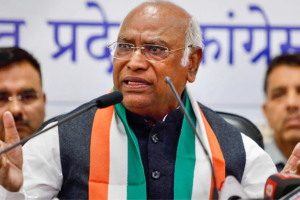External Affairs Minister S Jaishankar on Friday emphasised that India’s development journey is deeply connected with environmental conservation.
He reaffirmed the government’s commitment to the welfare of Scheduled Tribes through various initiatives, highlighting that the Antyodaya scheme is rooted in the principle of uplifting marginalised communities and ensuring that no one is left behind.
Advertisement
The minister was inaugurating the second edition of the art exhibition “Silent Conversation: From Margins to the Centre” in New Delhi. The four-day exhibition has been organised by the National Tiger Conservation Authority in collaboration with the Sankala Foundation, the National Human Rights Commission and the International Big Cat Alliance.
Jaishankar said India had achieved remarkable progress in environmental conservation under the leadership of Prime Minister Narendra Modi. He highlighted that the 2022 amendments to the Wildlife Protection Act aim to balance environmental conservation with development needs.
He credited the success of the National Tiger Conservation Authority to tribal communities and forest dwellers, whose guardianship has helped forests thrive and who actively combat poaching. He emphasised that policies are most effective when embraced by all citizens, referring to the concept of Janbhagidari.
Union Minister for Environment, Forests, and Climate Change Bhupendra Yadav emphasised in the video message, that the spirit of coexistence reflects how communities live in harmony with, protect, and respect nature. He praised this approach, especially as the world faces critical challenges such as climate change, biodiversity loss, and soil desertification.
On the occasion, a book titled “Hidden Treasures: India’s Heritage in Tiger Reserves” and a magazine called “Big Cats” were also released.
The exhibition aims to recognise the conservation ethos of tribal communities and highlight the symbiotic relationship between these communities and the environment. It seeks to inspire future generations to appreciate this connection and provides tribal artists an opportunity to engage with visitors.
The exhibition features over 200 paintings and 100 art pieces from 22 tiger reserves across India. Tribal art forms such as Gond, Warli, Pata Chitra, Bhil, and Sohrai are showcased and available for sale, with proceeds directly benefiting the artisans. All artworks are crafted using sustainable materials, reflecting the eco-friendly lifestyle of indigenous communities.
















